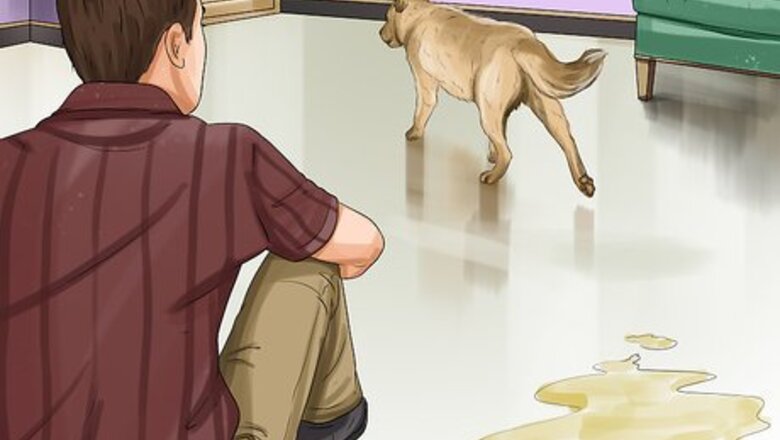
views
Taking Action When Symptoms Appear
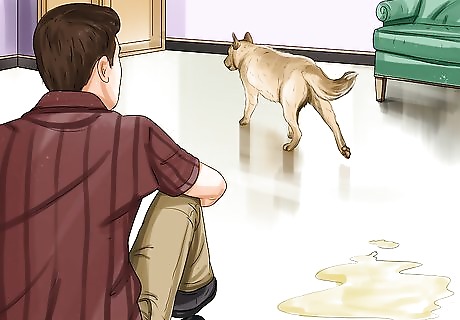
Watch for urinary incontinence in older or overweight dogs. Urinary incontinence may not be evident in a young animal, but it can develop over the years, especially if the dog becomes overweight. However, young dogs will have accidents from time to time as they're learning house training, which is not due to incontinence. In a puppy, urinary incontinence is generally caused by a physical abnormality. Usually, an incontinent puppy will either pee normally and dribble at other times or just dribble all the time without being able to pee normally. When an overweight dog lies down, the pressure in its abdomen is greater than on a slim dog, and it pushes harder on the bladder. If there's too much pressure, the valve at the end of the bladder can't stay closed, and urine leaks.
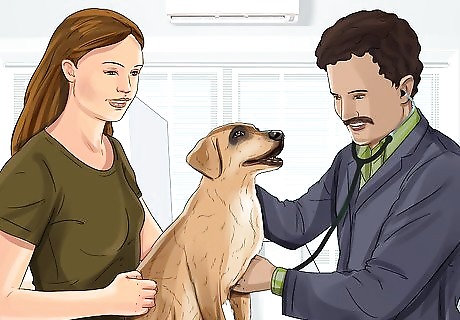
Take your dog to the vet if you notice symptoms of incontinence. The first step in treating incontinence is to talk to your vet about the symptoms you're noticing. Be sure to take a few notes so you have them on hand when you visit the vet. The vet will want to know things like how long the symptoms have been occurring, how often incontinence happens, and whether you've noticed any other changes in behavior.

Expect the vet to take or ask for a urine sample. The vet will perform a urine analysis and a urine culture on the sample. These tests will help determine the condition causing the incontinence, including checking for a bacterial cause.
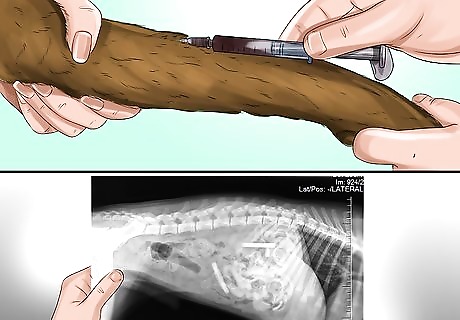
Ask about other tests, such as blood work and x-rays. If the urine sample doesn't offer enough evidence for a definitive diagnosis, the veterinarian may move on to blood work, x-rays, and ultrasounds. With these tests, the veterinarian may be looking for bladder stones, developmental abnormalities, infections, and/or tumors. For instance, the veterinarian will look for pelvic bladder syndrome, which is when the bladder is sitting partially in the pelvis instead of completely in the belly. This condition is common in large breeds of dogs such as Rottweilers, German Shepherds, Labradors, and Great Danes.
Exploring Treatments with Your Vet
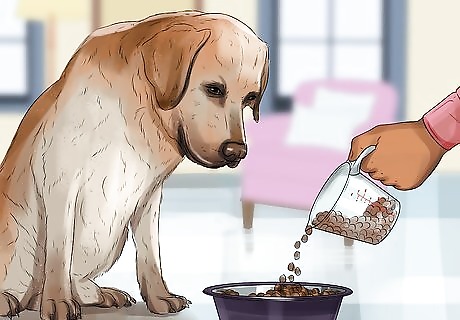
Treat pelvic bladder syndrome by managing your dog's weight. Putting an overweight dog on a diet can make a significant difference for a dog with this syndrome. Doing so may mean the dog doesn't need surgery. Typically, you start by reducing the amount the dog eats. You can also put the dog on special diet food instead. Talk to your vet about a good diet plan for your dog. Avoid giving your dog table scraps or too many treats, as they can pack pounds on your dog. Also, encourage your dog to be more active. Take it on walks, or throw a ball for it in the backyard. Activity helps your dog burn more calories and lose weight. Reducing abdominal fat reduces pressure on the bladder when the animal lies down.
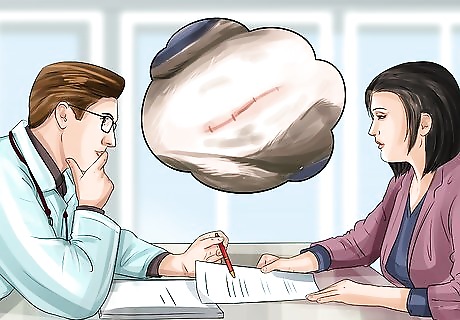
Discuss estrogen replacements for spayed females. Some spayed females don't have enough estrogen, which helps regulate the bladder. An estrogen replacement, such as diethylstilbestrol, can decrease incontinence. Ask your vet if this option may be right for your dog. Diethylstilbestrol is a synthetic estrogen hormone supplement. It makes the sphincter that controls urine more sensitive to norepinephrine. Norepinephrine helps the sphincter stay tightly shut. Typically, your dog will start out on 0.3-0.7 mg per kg of weight once a day for a week. After that, your dog will usually go up to 1 mg per day. Once urinary control is achieved and the sphincter is toned up, it may be possible to gradually reduce the dose.
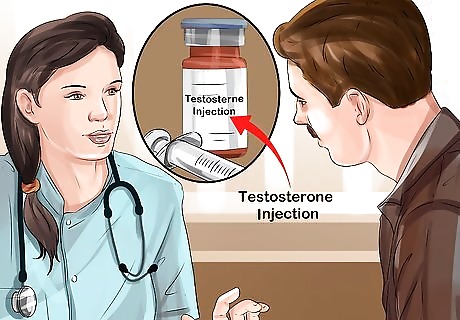
Ask your veterinarian about testosterone injections for male dogs. Incontinence is less common in males, but it does happen. Give testosterone injections to assist with this issue, though they aren't as effective as estrogen treatments are for females. If your veterinarian feels like this is a good option for your dog, they will show you how to give your dog injections or have you bring the dog in to get injections from them. Typically, your dog will receive 2.2 mg per kg of weight of testosterone propionate every couple of days, or 2.2 mg per kg of dog of testosterone cypionate every 1-2 months.
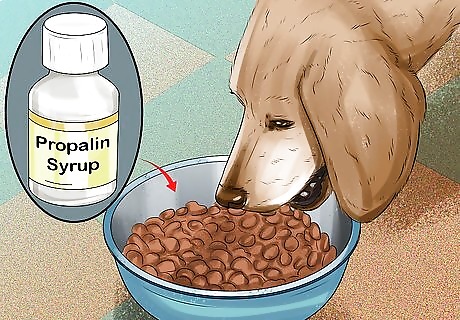
Opt for phenylpropanolamine (Propalin) for a non-hormonal option. Give this medication to male or female dogs. It works on the smooth muscles directly, providing greater support and tone to the sphincter. Give phenylpropanolamine 1-3 times a day. Usually, the dose is 1.5-2 mg per kg of weight. It's available in a syrup to make it easy to give to your dog in its food. Ephedrine, pseudoephedrine, and phenylephrine work in a similar fashion.
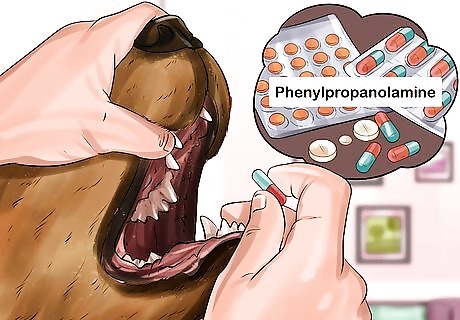
Discuss combining drugs in stubborn cases. Some cases of urinary incontinence fail to resolve on one medication alone. However, hormonal medications are suitable to use with adrenergic agonists like phenylpropanolamine. Since they act in different ways, combining them sometimes succeeds where one medication alone failed.
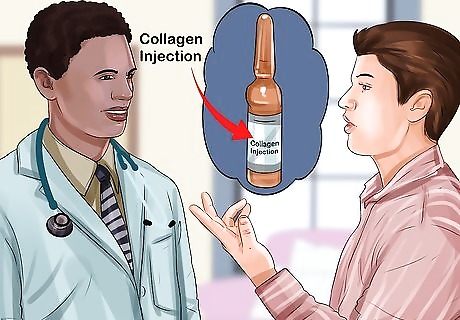
Ask about collagen injections for a non-invasive intervention. This technique essentially bulks up the area around the urethra, helping the dog hold urine in. Ask your veterinarian if collagen injections are an option for your dog. The veterinarian places the dog under general anesthesia, and then injects collagen in a circle around the urethra. In turn, that helps bulk up that muscle, allowing your dog to close the opening more easily.
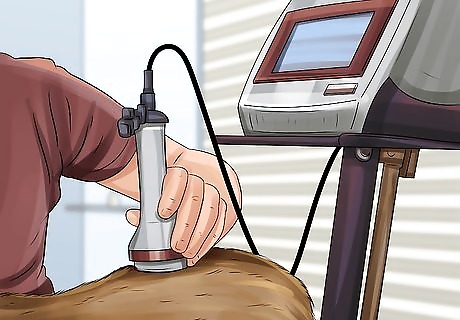
Choose laser treatment as an alternative to traditional surgery. If you don't like the idea of traditional surgery, this procedure is less invasive. Your veterinarian inserts a hollow, lit tube into the urethra, and then they use lasers to correct issues. Keep in mind that this method is not widely used or available. If you can find someone to perform this treatment, the procedure works well on ectopic ureter. Urine leaves each kidney via a fine tube called a ureter that connects with the bladder. In the case of an ectopic ureter, the ureter connects elsewhere, such as to the urethra, the tube that the allows urine to leave the bladder, resulting in incontinence.
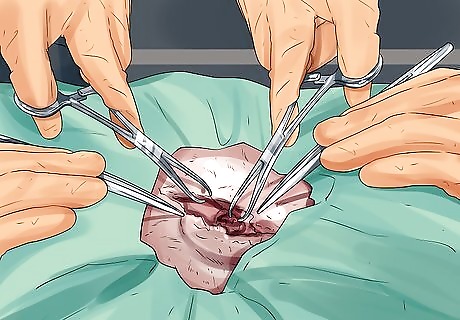
Expect surgery in severe cases of incontinence. If other methods have failed, traditional surgery may be your best option. Typically, the veterinarian will place an artificial urethral valve in the urethra, giving your dog better control over its bladder. For pelvic bladder syndrome, your veterinarian may perform a colposuspension, which involves repositioning the bladder within the abdomen and suturing it into the new position. This treatment is not widely used and it must be performed by a specialist. It also carries some risks for your pet.
Making Adjustments at Home
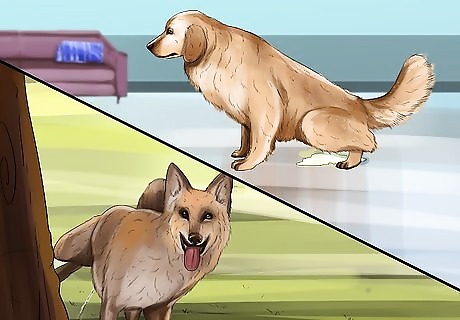
Provide plenty of opportunities for your dog to use the bathroom. Let your dog outside often to use the bathroom, particularly right before bed. Give your dog every chance to use the bathroom properly. Don't reduce the dog's water, as it still needs lots of fresh water every day. Never punish or chastise your dog for having accidents.
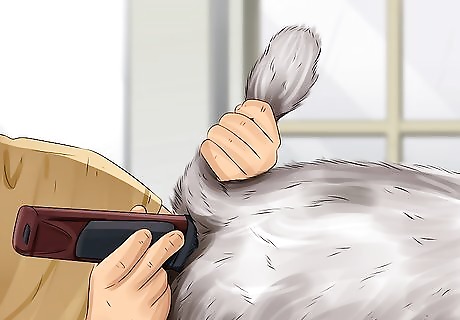
Keep the dog's private areas clean. If your dog is hairy, clip around the dog's private area to assist with cleanliness. Also, while your dog is having issues with incontinence, wash the tail and back legs twice a day with mild soap and warm water. If your dog looks like it's getting irritated skin from the urine, you can apply petroleum jelly or something similar to protect the skin.
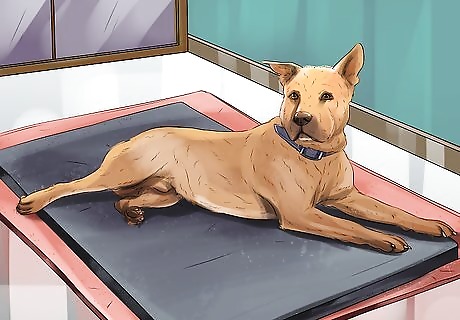
Wash the dog's bedding more often. If your dog is having incontinence issues, it's likely leaking in its bedding. That means you should launder it more often if possible. Use a puppy pad under the bedding that you can toss out. It will protect the floor or kennel underneath it.
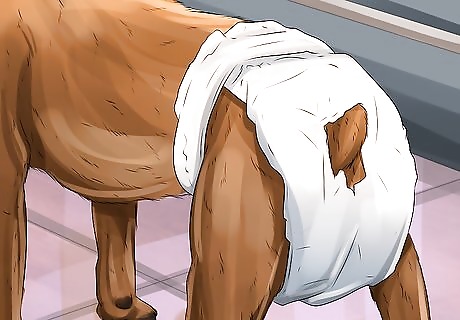
Use dog diapers to catch spills. When buying dog diapers, measure your dog so you can be sure to get the right size. Change the diaper often throughout the day so your dog doesn't have to sit in a wet diaper. When you change the dog, use baby wipes to clean up any extra urine. Buy disposable diapers if you're not interested in washing your dog's diapers. Buy reusable diapers if you want to help the environment. Reusable diapers have a higher cost up front than disposable, but they are cheaper in the long run.












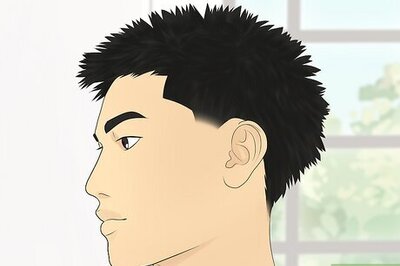





Comments
0 comment